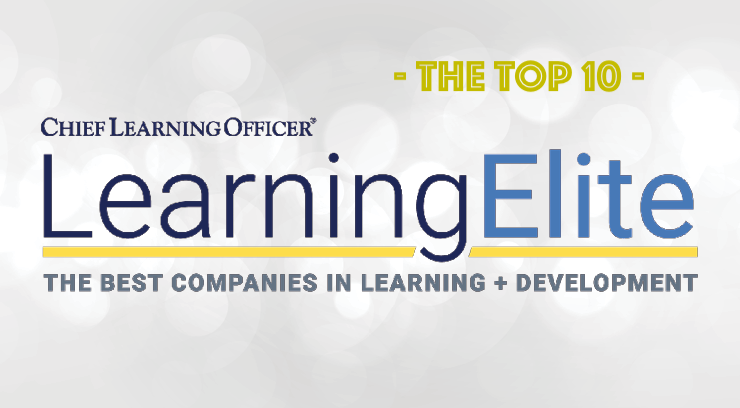
Aspen Dental ranked No. 5 among Chief Learning Officer’s 2021 LearningElite. Here’s how the dental practice management corporation pivoted amid the pandemic, delivering state-of-the-art immersive learning almost overnight.
by Sarah Fister Gale
July 19, 2021
At Aspen Dental, meeting the needs of doctors is at the heart of every learning decision the leadership team makes. “If we take care of their needs, they can take care of the millions of patients we serve,” says Arwinder Judge, chief clinical officer. “The only way to do that is with a great learning program.”
That commitment to training doctors and staff across the company’s nearly 900 offices in 43 states earned Aspen Dental the No. 5 spot in Chief Learning Officer’s 2021 LearningElite program.

Aspen’s learning strategy is built around developing doctors and their staff from a clinical and a business perspective, and aligning the investment in learning to the company’s overall business strategy. Lenore Jaquin, vice president of learning and performance, notes that the team’s ability to meet those needs is possible because “L&D has a seat at the table and is held accountable for business results the same as any other department within the organization.”
Jaquin participates in annual strategy meetings and uses those conversations to set annual learning goals in collaboration with C-suite leaders and practice owners. A plan is established and then reviewed and approved by the Learning Council, which comprises the CEO, COO, CHRO and CFO, along with several doctors who own multiple practices in the network. “Executives consider learning to be a lever for business performance just like any other,” she says. KPIs are reviewed regularly and the L&D team is held accountable to the business performance.
Building leaders
All of the teams in the Aspen Dental network have access to a robust set of programs to support everything from onboarding through executive leadership training. And while clinical education is key to keeping doctors and staff current, one of the biggest areas of interest for Aspen’s doctors is business and leadership training.
Each Aspen Dental practice is independently owned and operated by a licensed dentist. While the company provides support services, the owners are responsible for managing their business, Judge says. That is a challenge for many of them. “When they go to dental school, they learn medicine, not how to run a business.”
To ensure they have the business skills to run their offices, the L&D team offers a series of courses on people management, recruiting, customer service and the basics of running a business, including how to manage insurance billing and prove compliance with HIPPA and OSHA requirements. “This is a big pillar for our program,” Judge says.
Along with providing a diverse curriculum, one of the L&D team’s current priorities is to modernize the learning experience. Prior to the pandemic, the company implemented a new learning management system, branded Blueprint Learning, that leverages automation, social learning and flexible training formats to meet every learner’s needs. Learners can also review detailed learning journeys, track continuing education credits and receive personalized course recommendations powered by artificial intelligence to help them select the next best course.
Mentoring via virtual reality
The LMS wasn’t selected to accommodate the needs of COVID, but when the pandemic hit, it gave the company a head start on pivoting their offering and helping their offices adapt. “COVID didn’t stop the need for dental care,” notes Lori D’Anna, senior division vice president. But it did transform how patients would access care, and how dentists and staff engaged them.

Aspen closed 500 sites in the first weeks of the pandemic, and during that time the executive team made virtualized learning a top five organizational priority. They worked together to reprioritize learning projects and resources, reimagining them for a digital world. That included replacing the in-person new doctor mentoring program with a virtual reality solution.
Traditionally, Aspen doctors spend four or more weeks with a trained mentor before going “solo” with patients. But the pandemic prevented that face-to-face contact. So the L&D team adopted Microsoft’s HoloLens 2, an augmented reality technology to provide virtual mentoring in an immersive environment. The mentee doctor wears the HoloLens equipment, and the mentor provides real-time input and remote assistance as they work.
Jaquin’s team also deployed a virtual reality patient consultation training program for office managers that helped them rapidly train staff in all offices about a new dental implant offering that is a major element of Aspen’s business model. The VR content created a simulated office environment where managers could practice patient conversations and answer questions in an interactive environment without sacrificing the patient experience. The content was designed using real Aspen Dental office environments and actors who were trained to accurately represent patients.
For other programs that were taught in person, the team quickly converted them to live virtual events, with the goal of creating as many opportunities as possible to engage with people and have real-time conversations. “I was worried that we wouldn’t be able to do it all, but we pivoted on a dime,” Judge says. “It’s why we are an elite organization.”
Their success inspired Aspen Dental’s leadership team to share the digital content with the entire dental community, whether they are part of the Aspen Dental network or not. “We offered it to the masses, because everyone needs learning resources right now,” D’Anna says.

Lessons learned
When the pandemic is over, Aspen Dental is ready to resume face-to-face learning, much of which will take place in it’s brand-new 300,000-square-foot flagship learning facility in downtown Chicago. The new facility will become Aspen’s center of excellence for hands-on training, networking and large group events. “It’s a big part of our future and our continuing efforts to support leadership development for our people,” Judge says.
However, they aren’t going to abandon lessons learned during the pandemic. The forced adoption of virtual learning helped the L&D team see the benefits of virtual learning and of taking a more blended learning approach. “We can’t bring everyone to Chicago all the time,” D’Anna notes. She believes the virtual content will help them find the right balance and create a continuous learning environment that can adapt to the ongoing needs of the organization as it continues to grow.




